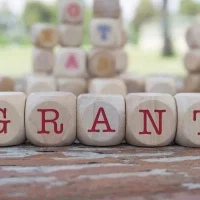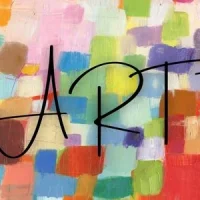In an ever-evolving world, the need for innovation and creativity has never been more pronounced. Nonprofit organizations, in particular, play a crucial role in addressing societal challenges, and they often rely on grants to fund their innovative projects. Innovation and creativity grants are designed to support initiatives that push boundaries, challenge the status quo, and foster new ideas that can lead to significant social change.
These grants can come from various sources, including government agencies, private foundations, corporations, and other nonprofit organizations. Understanding the landscape of these grants is essential for nonprofit professionals seeking to harness funding for their creative endeavors. The importance of innovation in the nonprofit sector cannot be overstated.
As organizations strive to meet the needs of their communities, they must adapt to changing circumstances and explore new methodologies. Grants that focus on innovation and creativity provide the necessary financial backing for nonprofits to experiment with novel approaches, develop cutting-edge programs, and implement transformative solutions. By tapping into these resources, nonprofits can not only enhance their impact but also inspire others in the sector to think outside the box and embrace a culture of creativity.
Government Grants for Innovation and Creativity
Government grants are a significant source of funding for nonprofits focused on innovation and creativity. Various federal, state, and local agencies offer grants aimed at fostering innovative solutions to pressing social issues. For instance, the National Endowment for the Arts (NEA) provides grants that support artistic projects that encourage creativity and community engagement.
Similarly, the National Science Foundation (NSF) offers funding for projects that promote scientific innovation and education. Navigating the government grant landscape can be complex, but understanding the specific goals and requirements of each grant program is crucial. Nonprofits should conduct thorough research to identify grants that align with their mission and objectives.
Additionally, many government agencies provide resources and workshops to help organizations prepare competitive applications. By leveraging these resources, nonprofits can increase their chances of securing funding for innovative projects that can make a meaningful difference in their communities.
Private Foundation Grants for Innovation and Creativity
Private foundations are another vital source of funding for nonprofits seeking to implement innovative projects. These foundations often have specific areas of interest or focus, which can range from education and health to environmental sustainability and social justice. Organizations like the Ford Foundation or the Rockefeller Foundation have established grant programs that prioritize innovative solutions to complex societal challenges.
When applying for private foundation grants, it is essential for nonprofits to align their proposals with the foundation’s mission and values. This alignment not only demonstrates a shared commitment to addressing specific issues but also increases the likelihood of receiving funding. Additionally, many private foundations encourage collaboration among nonprofits, which can lead to more comprehensive and impactful projects.
By forming partnerships with other organizations, nonprofits can enhance their proposals and showcase a collective approach to innovation.
Corporate Grants for Innovation and Creativity
Corporate grants represent another avenue for nonprofits to secure funding for innovative initiatives. Many corporations have established philanthropic arms that focus on supporting community development through grants. These corporate foundations often prioritize projects that align with their business objectives or corporate social responsibility (CSR) goals.
For example, tech companies may fund initiatives that promote digital literacy or STEM education in underserved communities. To successfully secure corporate grants, nonprofits should clearly articulate how their projects align with the corporation’s mission and values. Building relationships with corporate partners can also be beneficial; networking events, community engagement initiatives, and collaborative projects can help establish connections that may lead to funding opportunities.
Furthermore, demonstrating measurable outcomes and impact can make a compelling case for why a corporation should invest in a particular project.
Nonprofit Organization Grants for Innovation and Creativity
In addition to government, private foundation, and corporate grants, nonprofit organizations themselves often provide funding opportunities for innovative projects. Many larger nonprofits have grant programs designed to support smaller organizations or initiatives that align with their mission. For instance, organizations focused on environmental conservation may offer grants to support innovative sustainability projects led by grassroots groups.
Nonprofits seeking funding from other nonprofit organizations should carefully review eligibility criteria and application guidelines. It is also beneficial to highlight how the proposed project complements or enhances the work of the larger organization. By demonstrating a clear connection between the two entities’ missions, smaller nonprofits can increase their chances of receiving support for their innovative initiatives.
Grant Application Process for Innovation and Creativity Grants
The grant application process can be daunting, especially for those new to seeking funding for innovative projects. However, understanding the key components of a successful application can significantly improve an organization’s chances of securing a grant. First and foremost, it is essential to thoroughly read and understand the grant guidelines provided by the funding agency or organization.
This includes eligibility requirements, application deadlines, and specific evaluation criteria. Once an organization has identified a suitable grant opportunity, it should begin crafting a compelling proposal. A well-structured proposal typically includes an executive summary, a clear statement of need, project goals and objectives, a detailed budget, and an evaluation plan.
It is crucial to articulate how the proposed project aligns with the funder’s mission while also highlighting its potential impact on the community. Additionally, including letters of support from community partners or stakeholders can strengthen the application by demonstrating collaboration and community buy-in.
Success Stories of Innovation and Creativity Grant Recipients
Real-world examples of successful grant recipients can provide valuable insights into how innovation and creativity grants can transform organizations and communities. One notable success story is that of a nonprofit focused on providing educational resources to underserved youth. With funding from a government grant aimed at promoting STEM education, the organization developed an after-school program that incorporated hands-on science experiments and technology workshops.
The program not only improved students’ academic performance but also sparked interest in pursuing careers in science and technology. Another inspiring example comes from a small nonprofit dedicated to environmental conservation. After receiving a private foundation grant, the organization launched an innovative community garden initiative that engaged local residents in sustainable farming practices.
The project not only provided fresh produce to food-insecure families but also fostered community cohesion and environmental awareness. These success stories illustrate how innovation and creativity grants can empower nonprofits to implement impactful projects that address pressing social issues.
Tips for Securing Innovation and Creativity Grants
Securing innovation and creativity grants requires strategic planning and preparation. One of the most effective tips is to build relationships with funders before applying for grants. Attend networking events, workshops, or informational sessions hosted by funding organizations to gain insights into their priorities and expectations.
Establishing rapport with funders can also lead to valuable feedback on proposals before submission. Another important tip is to focus on storytelling in grant applications. Funders are often drawn to compelling narratives that illustrate the need for a project and its potential impact on the community.
By sharing personal stories or testimonials from beneficiaries, nonprofits can create an emotional connection that resonates with funders. Additionally, being transparent about challenges faced during project implementation can demonstrate resilience and adaptability—qualities that funders value in potential grantees. In conclusion, innovation and creativity grants are essential resources for nonprofit organizations striving to make a difference in their communities.
By understanding the various sources of funding available—government agencies, private foundations, corporations, and other nonprofits—organizations can strategically pursue opportunities that align with their missions. Through careful preparation of grant applications and by learning from successful recipients, nonprofits can enhance their chances of securing funding for transformative projects that foster innovation and creativity in addressing societal challenges.





![Call for Applications: “Voices in Motion” Program [Sri Lanka] - fundsforNGOs Call for Applications: “Voices in Motion” Program [Sri Lanka]](https://www2.fundsforngos.org/wp-content/uploads/2023/04/dance-200x200.jpg)



































